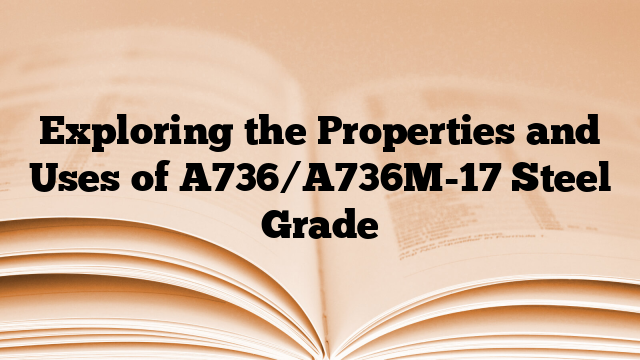The A736/A736M-17 steel grade is a low carbon, high strength steel plate that is used in pressure vessels. It is specifically designed for welded pressure vessels and offers excellent notch toughness and weldability.
The chemical composition of A736/A736M-17 steel grade is as follows:
– Carbon (C): The maximum carbon content is 0.15%, which helps to improve weldability and reduce the risk of brittleness in the steel.
– Manganese (Mn): The manganese content ranges from 0.60% to 1.35%, which provides strength and improves the hardenability of the steel.
– Phosphorus (P): The maximum phosphorus content is 0.025%, which ensures good quality and eliminates any impurities in the steel.
– Sulfur (S): The maximum sulfur content is 0.025%, which ensures good weldability and helps to improve the overall quality of the steel.
– Silicon (Si): The maximum silicon content is 0.15%, which helps to improve the strength and durability of the steel.
The mechanical properties of A736/A736M-17 steel grade are as follows:
– Tensile Strength (MPa): The minimum tensile strength is 485 MPa, which indicates the maximum amount of load the steel can withstand before it breaks.
– Yield Strength (MPa): The minimum yield strength is 260 MPa, which indicates the maximum amount of load the steel can withstand before it starts to deform permanently.
– Elongation (%): The minimum elongation is 22%, which indicates the ability of the steel to stretch without breaking or fracturing.
The A736/A736M-17 steel grade meets the ASTM A736/A736M standard, which specifies the requirements for steel plates for direct-heat-treated carbon-manganese-silicon steel plates for welded pressure vessels. This standard ensures that the steel meets the necessary quality and performance requirements for its intended applications.

